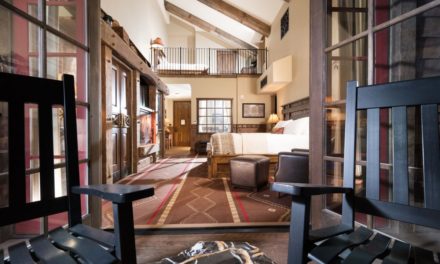A commentary by Otis White – weekly regular on Smart City – for Governing magazine:
You know hip when you see it in Coconut Grove in Miami, Buckhead in Atlanta or LoDo in Denver. But what does hip look like in Harrisburg, Pa.? OK, probably not South Beach cool, but some of the elements that make entertainment districts click in big cities are at work in Harrisburg’s surprisingly successful Restaurant Row.
We know about Restaurant Row thanks to a nice piece of analysis by the Harrisburg newspaper, the Patriot-News. As the newspaper points out, nobody dreamed up Harrisburg’s lively street of bars and restaurants. It just happened. But a number of things came together to make these establishments pop up in what had been a pretty lifeless part of town.
“It was the perfect storm,” one restaurateur said. “Everything happened at the right time, and it fed off itself. It was just place after place after place, and people knew there was something interesting and exciting going on.”
Cool Congregations
So Lesson No. 1 in the handbook of hipness: Cool places congregate, just like the cool kids in high school. And rather than proximity hurting, it helps the restaurants and bars.
This leads to Lesson No. 2: It’s not the bars and restaurants that draw people, it’s the people themselves. The establishments provide the setting. “People like to watch people,” one restaurant owner told the Patriot-News. “A crowd draws a crowd,” another said.
Added a third, “It’s the energy. You need to have that energy. You go out to be with other people and be in an environment that’s energizing.” How big are the crowds along Restaurant Row? On summer evenings as many as 7,000 people hang out there, the newspaper reported, which would be a lot even in big cities.
But the setting does matter, which is Lesson No. 3. Clearly there was something about North Second Street that caught the eye of restaurant owners in 2001, as the district was taking shape. One owner looked at the corner of Locust and Second and saw, surprisingly, soft breezes.
Open The Blinds
“I was just looking out the window on the corner, and I just thought, ‘We need to put in really big windows,'” he told the paper. “I knew this was the corner to watch Harrisburg.” So he named his restaurant Fisaga (for the god of breezes in Polynesian mythology)and installed large rollout windows that opened to the street.
Others noted how patrons enjoyed sitting inside but being part of the street scene and installed their own rollout windows. Said one of the early adopters, the windows were “no great invention. You can go to any large city and see it. But here, it tripped a wire in people’s heads. We jumped right behind (Fisaga) and did it.” This is Lesson No. 4: Districts like these encourage a kind of hipness competition and that’s good.
Lesson No. 5: While they can’t create hip districts, city governments can do things to encourage them once they’re started. The big thing Harrisburg did was to build a parking deck nearby. “The parking garage, that’s the No. 1 factor, no doubt in my mind,” one restaurant investor said. “They built that garage right in the middle of where things were just starting to explode.” Why was this so important? Because it removed an objection people had to visiting the area, the difficulty of parking.
Focus On Restaurants
Lesson No. 6: Recognizing Restaurant Row as an asset, the city didn’t do anything stupid. A less alert city administration might have panicked as crowds milled about Second Street, with the usual byproducts of noise and litter. To the contrary, the city did smart things. Example: It took over noise control from the state liquor commission. Entertainment districts are noisy places, and the city didn’t want the state to shut down bars that exceeded state standards, so it established its own, more tolerant regulations.
The city did other smart things: It licensed restaurants for sidewalk dining, creating even more energy up and down Second Street. And it put cops on horseback to keep crowds under control and patrons feeling safe. “This (city) administration has worked with us from Day One,” one restaurateur said. “They could have shut us down. Instead, they created the atmosphere.”
Footnote: Restaurant Row is changing, as the newspaper reported. As it ages, it’s losing some of its novelty. Prices are declining in bars and restaurants. “As many new places as there are, it brings price competition,” one owner said. “It’s like Wal-Mart.” But if Second Street is losing some of its appeal for hipsters, it’s gaining a new audience, families. One owner pointed to a restaurant that has started drawing married couples and their children. “There are kids all over that place,” he said.




